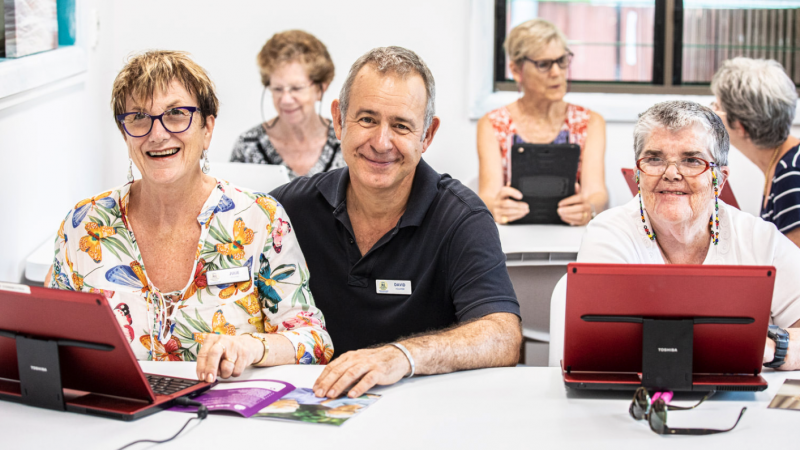It’s time for a national strategy
The benefits of digital inclusion are endless, but who's owning the strategy to ensure Australians are digitally included?

Australians across the country are struggling at the moment – whether it’s dealing with drought, fighting fires, trying to breathe through the smoke, or worrying about loved ones caught up in it all.
So it’s great to see that there are digital solutions to some of this – supporting people in drought-hit communities by joining the #BuyFromTheBush social media campaign, using the Fires Near Me app to keep on top of what’s happening, working from home when you need to, and going online to keep in touch.
But spare a thought for those Australians who aren’t digitally connected. Believe it or not, there are more than six million of us in this country who don’t have the digital skills they need to fully participate in some of the essential ways we find jobs or connect to essential services.
ABS data show there are 2.5 million Australians who are not internet users and Australia Post research in 2017 showed that four million people are limited users who rarely engage with the internet.
Those figures are staggering when you think about how vital it is in today’s world for every individual to be digitally included. But it’s even more important when you think of the cost to the economy of their exclusion from digital life and the huge potential benefit of giving them digital skills.
Digital inclusion isn’t just about better, faster, cheaper broadband or mobile coverage. It’s not just about the NBN, although the rollout plays an important role. This is about all Australians having the skills and confidence they need to use technology safely to improve their lives.
According to Deloitte research (2015), the potential cost savings for the government of everyone in Australia accessing online services would be around $20.5 billion. CSIRO research in 2018 shows that telehealth could save the health care system up to $3 billion a year, but this relies on consumers having digital skills. In agribusiness, digital technology can modernise and integrate production from the paddock to plates here and around the world, with a potential $20.6 billion GDP boost by according to the Government’s Regional Telecommunications Review in 2018. These are eye-watering amounts of benefit to the economy at a time when some economists are telling us there’s a recession just around the corner.
The Federal Government has been investing in boosting digital skills across the country, but so far the funding has only been directed at older Australians. In just two years, the Be Connected program has distributed $12m in grants to over 2,700 community and neighbourhood groups and provided a high-quality online learning tool with courses and topics from the basics of using a computer, through to scams and staying safe online.
In the two years Good Things Foundation has been delivering Be Connected in Australia, we have helped to get 250,000 older Australians online safely and confidently. Many of them have told us they need to find work and the online jobs marketplace has been closed to them until now. Following their families on social media is a bonus.
And then there are the all-important hip pocket benefits. People save money from online deals and searching for the cheapest goods. In the UK, research from Lloyds Banking Group shows that the average person saves over $1,000 (£744) from being online.
The good news is we know this is a relatively easy win. Australia can realise these social and economic benefits for the nation and its citizens, but we need to act now to make sure the momentum that’s begun continues.
The business world, both here and internationally, recognises that digital inclusion is an important goal. In the UK, 2018 research by the Centre for Economic Business Research (CEBR) working with Good Things Foundation shows that a 100 per cent digitally able Britain has a net present value of $41.8 billion (£21.9 billion).
Federal decision-makers need to recognise that digital inclusion is a challenge they should be owning. Now is the time for the Government to take the lead to ensure everyone has the ability and confidence they need to engage safely with the digital world. This means that alongside strategies for digital transformation of government services and the future of work, we need a digital inclusion strategy to ensure no one is left behind and this huge workforce participation potential is realised.
As the Government prepares to explain how the newly merged Federal Departments will operate, now is the perfect time for the Prime Minister to identify who will take responsibility for ensuring this skills gap is closed and all Australian citizens are digitally included.
